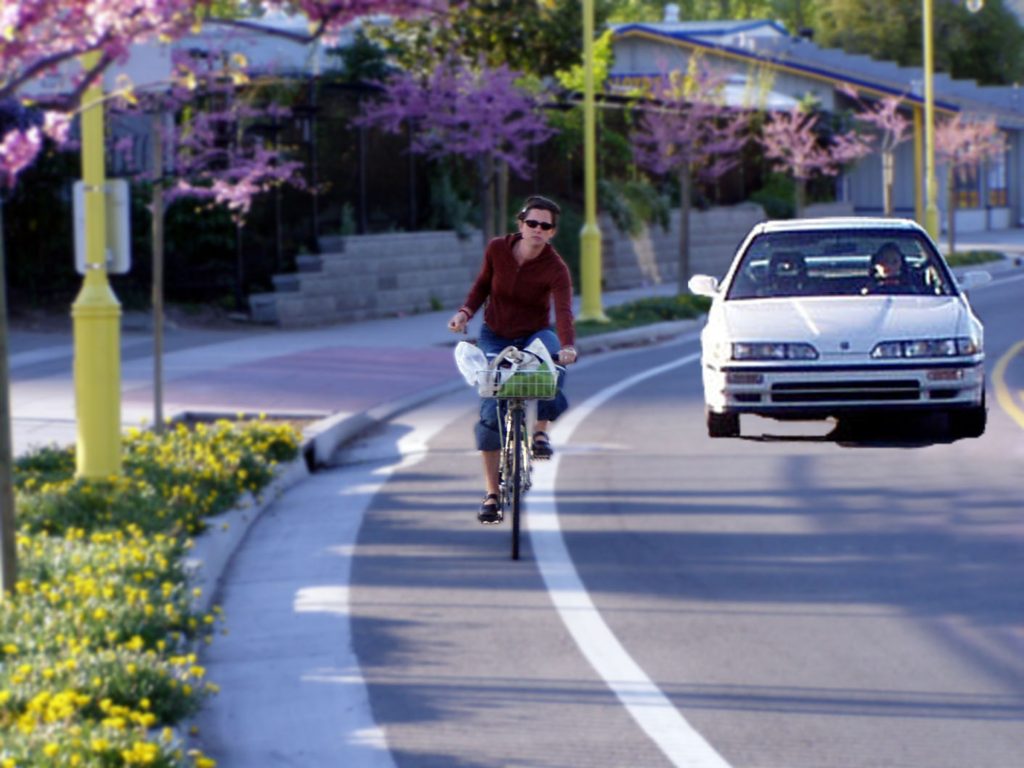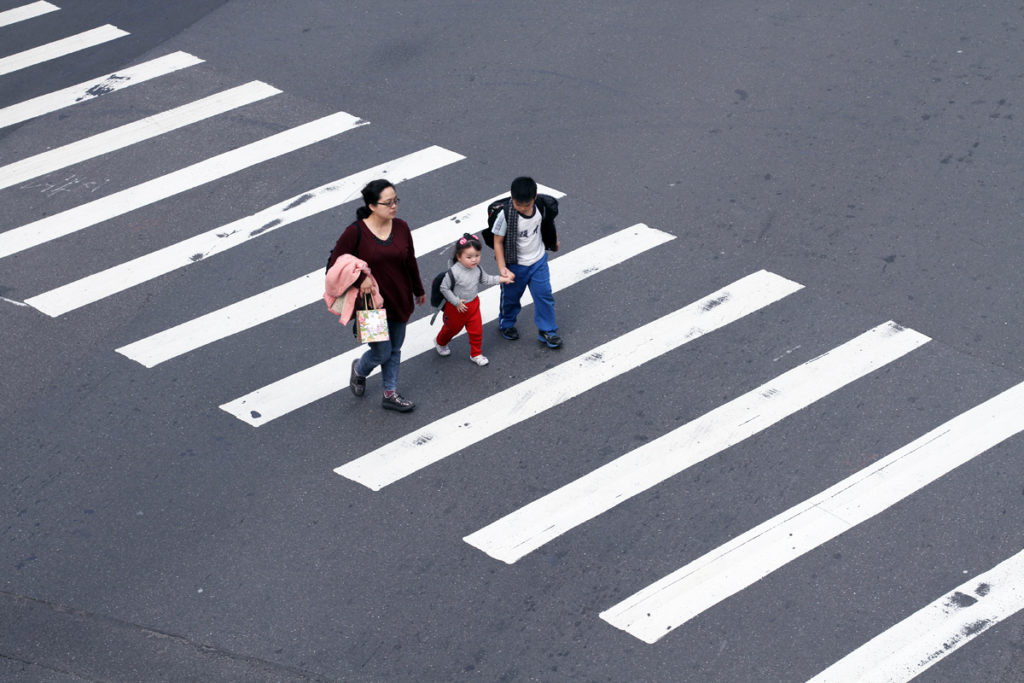BACKGROUND ON WALKING & BIKING SAFETY
Transportation funding and planning in Virginia has overwhelmingly prioritized roadway expansion and moving cars faster at the expense of Virginians’ ability to safely walk and bike around their communities. Active transportation offers healthy, sustainable, and more affordable ways to get around that also reduce pollution, decrease traffic, and boost public health.
Biking and walking produce no carbon emissions and help to reduce traffic congestion while fostering a sense of community. Both modes provide people critical first- and last-mile connections to public transportation without needing to drive and offer the most economical option for those looking to reduce their transportation costs or those who may have limited transportation choices due to their health.
Recent impressive growth in walking and biking, especially in response to the pandemic, comes at a time when pedestrian and cyclist fatalities have been growing in the Commonwealth. To turn the tide, Virginia needs to pass legislation which enables safer active transportation.
According to the Governors Highway Safety Association, nationwide pedestrians fatalities have increased by 53 percent over the past decade. Virginia saw a 10 percent increase in pedestrian deaths from 2018 to 2019 alone. The inequality of access to safe sidewalks and cycling infrastructure has become even more evident in low-income neighborhoods and communities of color which disproportionately rely upon walking and biking for transportation rather than recreation.
Virginia has made great strides to integrate walking and biking into the state’s transportation system, but more needs to be done in order to make active transportation safe and accessible for people of all ages and abilities. VCN is supporting HB1841, HB1903, and HB2262 in order to make biking and walking both safe and accessible throughout the Commonwealth.

HB1841: ZEBRA CROSSWALK
The state of Virginia has multiple crosswalk designs, some of which are proven to have low visibility and therefore are less safe for both drivers and pedestrians. Currently in the Commonwealth, citizens with low vision have no guarantee that new crosswalks being added in their communities prioritize their safety.
This bill mandates that all new or retrofitted crosswalks in Virginia must be marked in the high visibility Zebra Pattern for pedestrian and driver safety. It also mandates the installation of warning surface tiles that are “federal yellow” (for dark sidewalks) or “dark red” (for light sidewalks) to be used at all crosswalks throughout the Commonwealth to help citizens who are visually impaired or blind.
HB1903: AUTHORITY TO REDUCE SPEED LIMITS
Currently, localities in Virginia cannot lower a speed limit on any road below 25mph. When traveling 30mph a driver kills half of all pedestrians they hit. When traveling 20 mph, survival rates jump to 90 percent for pedestrians. Given that most people speed by at least 5mph, it’s important that localities have the option to introduce speed limits as low as 15mph, especially around sensitive locations such as schools, day cares, and assisted living communities.
This bill is enabling legislation only, with no mandate and no fiscal impact.
HB2262: BICYCLE SAFETY ACT
The Bicyclist Safety Act would require drivers to change lanes to pass people biking, allow cyclists to ride two abreast, and allow bike riders to yield at stop signs (“Safety Stop”).
These laws are critical to biker safety as they have demonstrably improved safety where implemented across the country:
- Delaware State Police found a 23 percent reduction in bicyclist injuries in crashes with cars at stop signs and a 11 percent reduction in bike injuries overall after passing a similar “Friendly Delaware Act.”
- Idaho saw a 14 percent reduction in bike crashes after implementing the Safety Stop. Idaho cities are now 30% safer for bicyclists compared to peer cities.
REASONS TO SUPPORT WALKABILITY & BIKEABILITY IN VIRGINIA
HB1841: ZEBRA CROSSWALK
- Low-visibility crosswalks are a major risk to walkers and bikers. Low vision is one of the top 10 disabilities among those 18+ and about 178,400 people in Virginia have low vision.
- Zebra crosswalks are the most visible crosswalk design for drivers.
- This bill does NOT mandate all crosswalks must be repainted, only those in need of maintenance or installation.
- Localities such as Washington D.C., Richmond, VA, Boston, MA, San Francisco, CA, and Los Angeles, CA have adopted the Zebra Crosswalk.

HB1903: AUTHORITY TO REDUCE SPEED LIMITS
- All traffic fatalities are a function of speed, and speeding related fatalities are increasing across the country according to numerous studies by the Governor’s Highway Safety Administration, Insurance Institute for Highway Safety, Federal Highway Administration, and the National Highway Traffic Safety Administration.
- Speeding-related fatalities are up 25 percent across Virginia over the past three years in a consistent upward trend. This coincides with a 15 percent reduction of speeding-related crashes and injuries last year, indicating crashes are becoming deadlier according to Virginia DMV TREDs data.
- Speeding related fatalities are more numerous than alcohol-related crashes, killing 400 in 2020.
- Several localities across the state are reporting record high numbers of pedestrian fatalities, including Henrico, Chesterfield, and Petersburg in the Richmond region.
- Most DPWs and DOTs interpret our code such that 25 is the minimum speed limit. Currently, lowering the threshold requires a costly speed study and potentially a local political vote. These are significant barriers to lowering speeds in places where people are most vulnerable to pedestrian crashes and to speeding drivers – residential and business districts.
HB2262: BICYCLE SAFETY ACT
- 45% of bike fatalities are a result of improper passing by motorists.
- Allowing two-abreast riders protects children cyclists by allowing parents to ride outside their children as well as protects drivers by reducing vehicle passing time.
- Mandating that drivers must change lanes while passing cyclists creates clear passing instructions to help drivers pass groups of cyclists easier.
- The Bicycle Safety Act mitigates targeted enforcement toward marginalized riders (low income, people of color, non-English speakers).
- Some evidence and logic suggests that bike laws that more appropriately meet needs of riders leads to higher compliance.
Thanks for your Support!
Thanks to our supporters and advocacy from our Partners at Bike Walk RVA, all three bills have passed the General Assembly and are on their way to the Governor’s desk! (update: 2/25)
